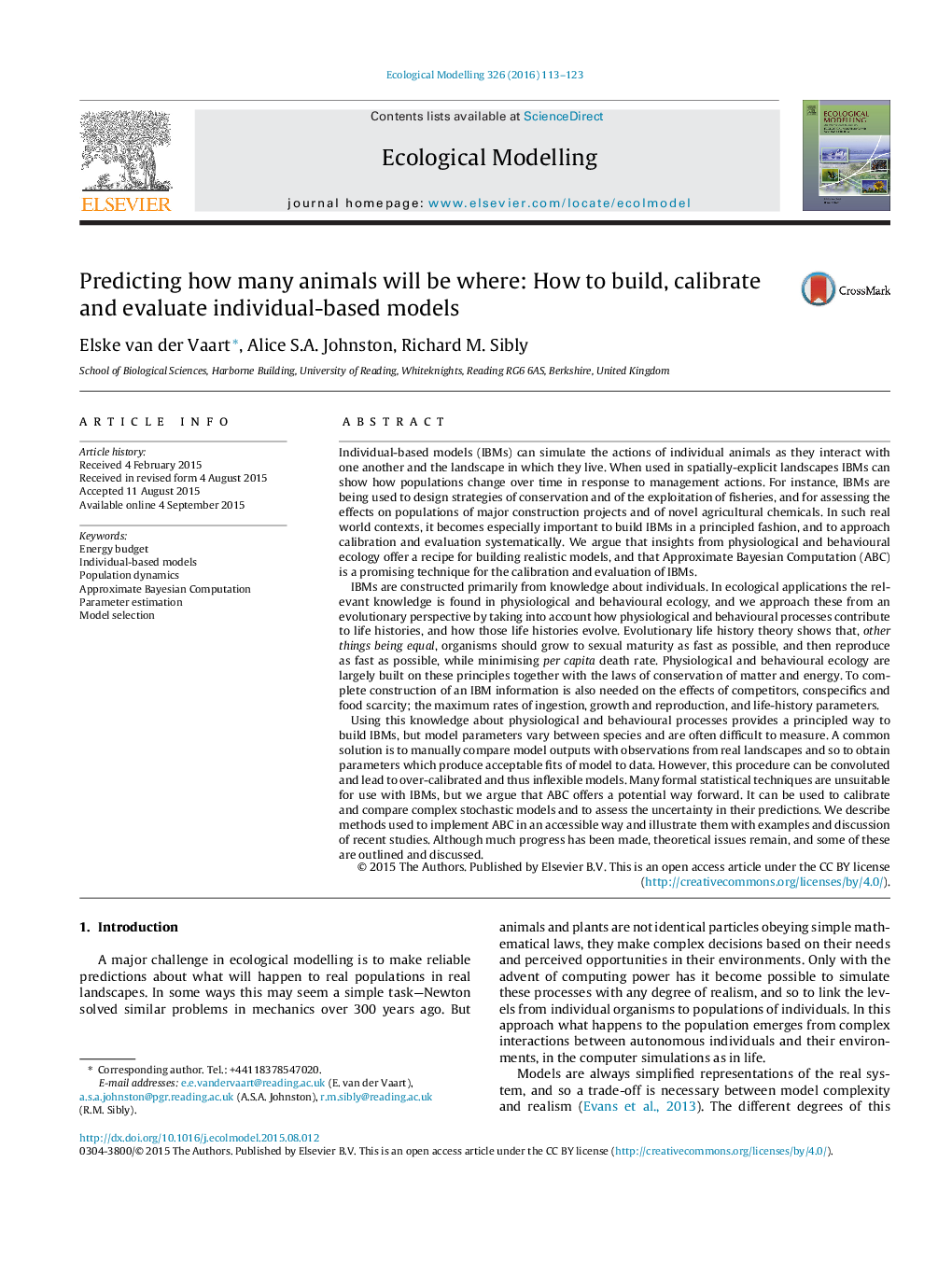| کد مقاله | کد نشریه | سال انتشار | مقاله انگلیسی | نسخه تمام متن |
|---|---|---|---|---|
| 6296348 | 1617421 | 2016 | 11 صفحه PDF | دانلود رایگان |
- Individual-based models (IBMs) have much to offer predictive ecological modelling.
- Realistic IBMs are built upon insights from behavioural and physiological ecology.
- Approximate Bayesian Computation (ABC) is a new technique for improving IBMs.
- The promise of ABC is that it solves both parameter estimation and model selection.
Individual-based models (IBMs) can simulate the actions of individual animals as they interact with one another and the landscape in which they live. When used in spatially-explicit landscapes IBMs can show how populations change over time in response to management actions. For instance, IBMs are being used to design strategies of conservation and of the exploitation of fisheries, and for assessing the effects on populations of major construction projects and of novel agricultural chemicals. In such real world contexts, it becomes especially important to build IBMs in a principled fashion, and to approach calibration and evaluation systematically. We argue that insights from physiological and behavioural ecology offer a recipe for building realistic models, and that Approximate Bayesian Computation (ABC) is a promising technique for the calibration and evaluation of IBMs.IBMs are constructed primarily from knowledge about individuals. In ecological applications the relevant knowledge is found in physiological and behavioural ecology, and we approach these from an evolutionary perspective by taking into account how physiological and behavioural processes contribute to life histories, and how those life histories evolve. Evolutionary life history theory shows that, other things being equal, organisms should grow to sexual maturity as fast as possible, and then reproduce as fast as possible, while minimising per capita death rate. Physiological and behavioural ecology are largely built on these principles together with the laws of conservation of matter and energy. To complete construction of an IBM information is also needed on the effects of competitors, conspecifics and food scarcity; the maximum rates of ingestion, growth and reproduction, and life-history parameters.Using this knowledge about physiological and behavioural processes provides a principled way to build IBMs, but model parameters vary between species and are often difficult to measure. A common solution is to manually compare model outputs with observations from real landscapes and so to obtain parameters which produce acceptable fits of model to data. However, this procedure can be convoluted and lead to over-calibrated and thus inflexible models. Many formal statistical techniques are unsuitable for use with IBMs, but we argue that ABC offers a potential way forward. It can be used to calibrate and compare complex stochastic models and to assess the uncertainty in their predictions. We describe methods used to implement ABC in an accessible way and illustrate them with examples and discussion of recent studies. Although much progress has been made, theoretical issues remain, and some of these are outlined and discussed.
Journal: Ecological Modelling - Volume 326, 24 April 2016, Pages 113-123
